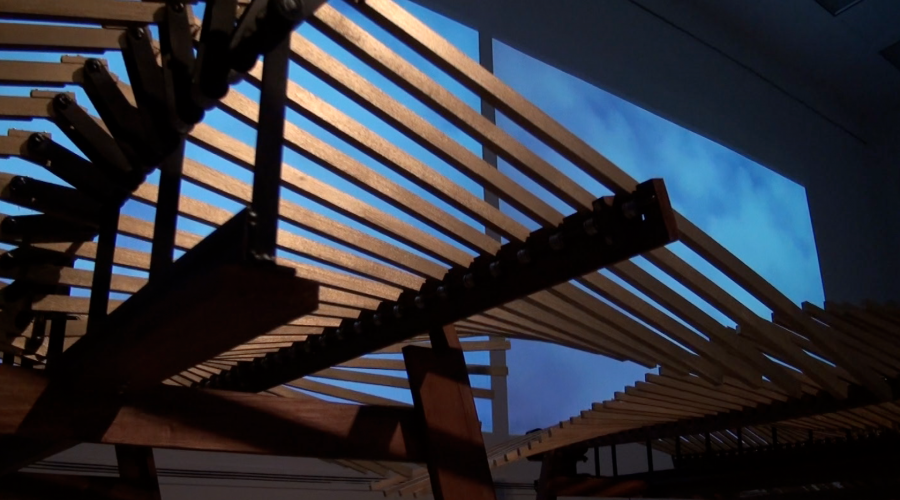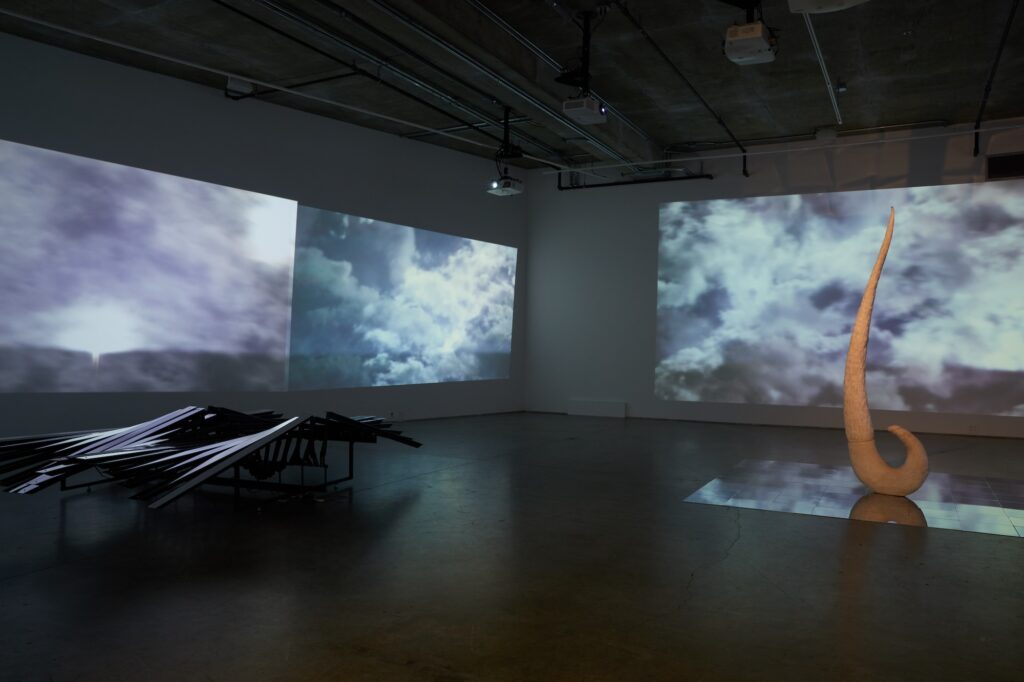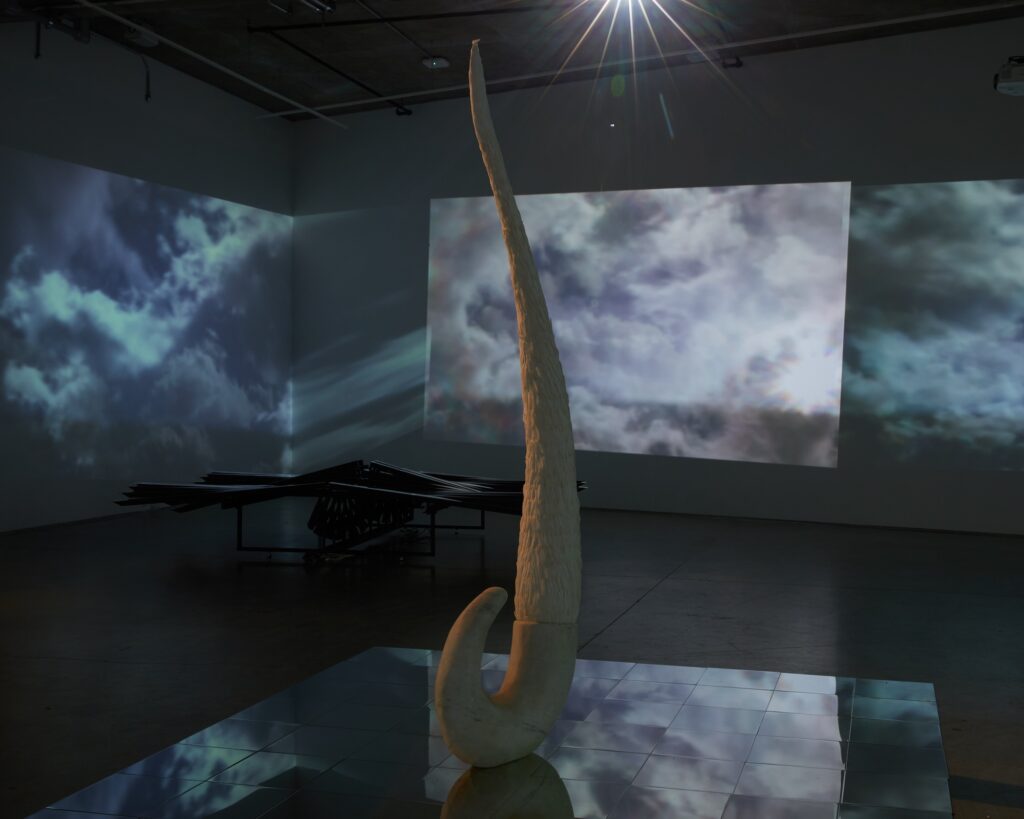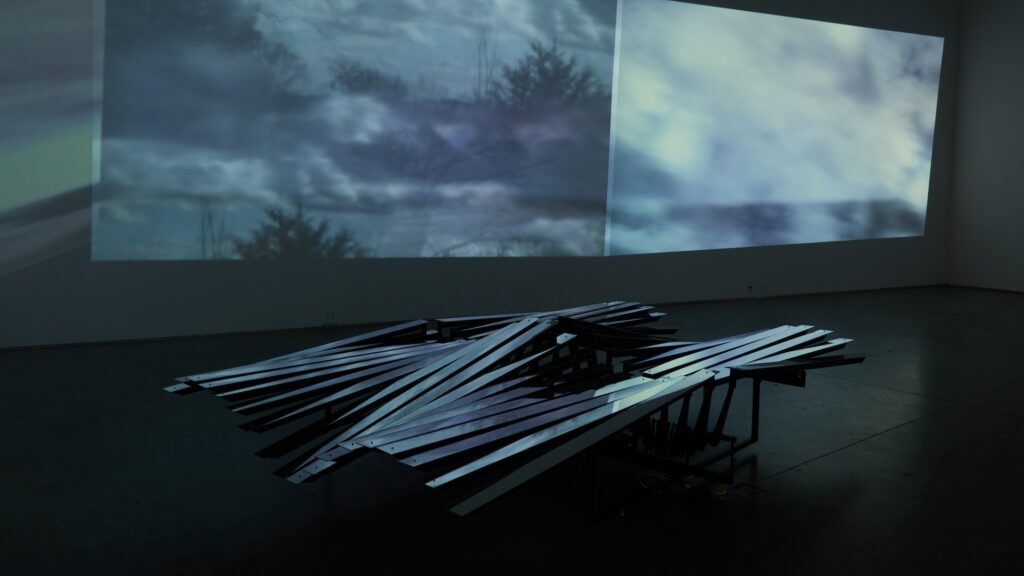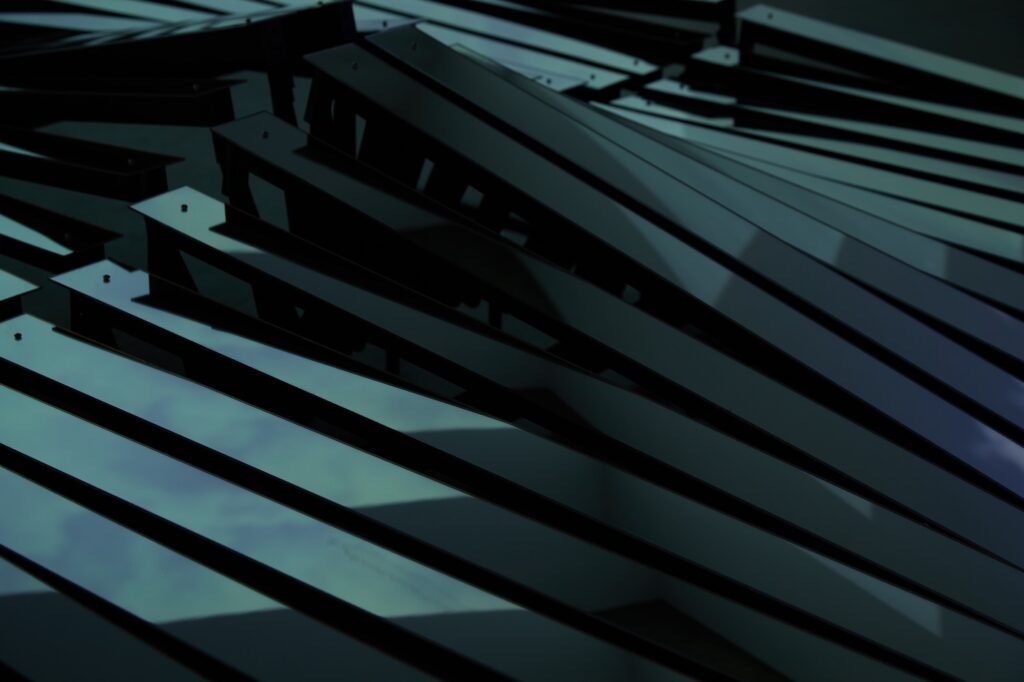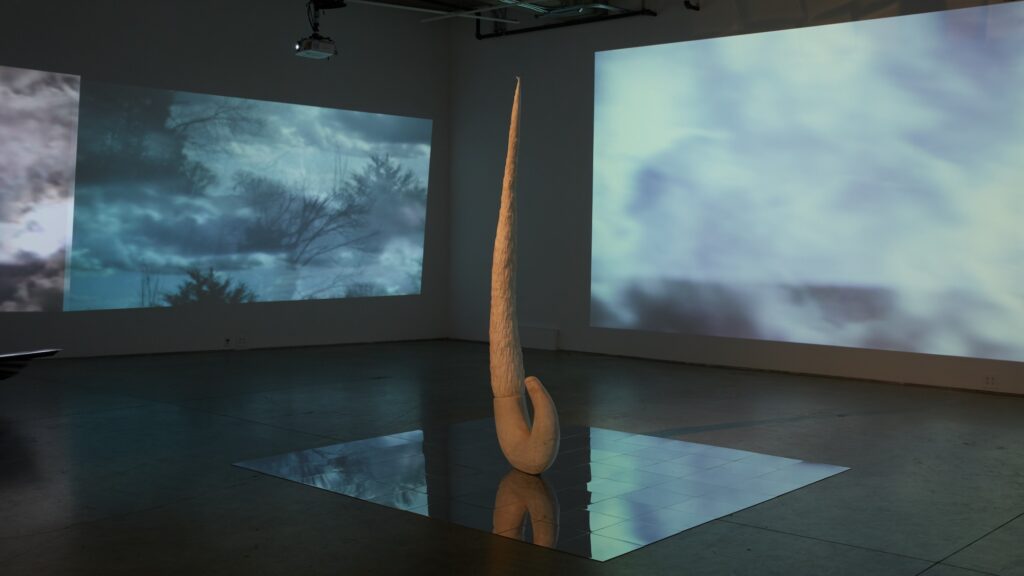John Douglas Powers’ recent sculptures squeal and squeak. Made of wooden slats, steel, and simple motors, the kinetic sculptures are self-evident, the materials are simple. Yet, when mechanized, they create what Powers describes as both a horrifying and seductive sound. He likens the cry and groan of the moving slats to the undeniably beautiful song...
John Douglas Powers’ recent sculptures squeal and squeak. Made of wooden slats, steel, and simple motors, the kinetic sculptures are self-evident, the materials are simple. Yet, when mechanized, they create what Powers describes as both a horrifying and seductive sound. He likens the cry and groan of the moving slats to the undeniably beautiful song of the Sirens. Notoriously appearing in The Odyssey, the Sirens represent temptation and the self-restraint needed to resist that temptation. Odysseus is able to steer his men from the danger of the alluring song by instructing them to put beeswax in their ears, while only he, tied to the mast of the ship, can hear their overwhelming song. What he hears is so torturous (“For we know everything that went on at Troy”) that he begs to be let free.
And, evoking Odysseus’ travels, the movement of Power’s sculptures might remind the viewer of a ship, rolling on an open sea, the creaking of its timbers, the swelling of the ocean bolstering these strange abstract works. Horizontal and low to the ground, the sculptures contain strips of mirrors, reflecting the viewer and the blue sky of the video installation that surrounds them. Constructed through the use of a pinhole camera, the video acts, according to Powers, as a vista or a view glimpsed through a narrow opening, say an oarlock opening, the rhythmic motion of the the wooden slats not unlike the steady clattering back and forth of oars. The seeming expansiveness of the sky belies the work’s mode of making. As the sculpture moves so too does the sky, turning in on itself again and again creating a looping effect that plays against the continual return of the kinetic sculpture. “At times it feels like you are at sea,” Powers explains, “And then it just dissolves.”
The rhythmic movement and repeating nature of the work is significant to Powers as he considers narrative, time, and space in this installation. The cyclical effect of the sculpture contrasts with any sense of implied narrative. “It’s more action, than direct stories,” he explains. The implication of a boat at sea is there, and yet any sense of progress is constantly frustrated. Whereas Odysseus eventually arrives home, in Powers’ work there is no concrete destination. Rather, the viewer, at first startled by the unpleasant song of the sculpture, begins to be lulled, lost in the grip of its continual looping movement, caught in time and distance.
John Douglas Powers was born in Frankfort, Indiana in 1978. His sculptural work has been exhibited nationally at venues including Crystal Bridges Museum of American Art, The MIT Museum, The Mariana Kistler Beach Museum of Art, The Huntsville Museum of Art, The Wiregrass Museum of Art, The Alexander Brest Museum, The Masur Museum, The Gadsden Museum of Art, Jonathan Ferrara Gallery, Brenda Taylor Gallery, The Georgia Museum of Art, The Vero Beach Museum of Art and Cue Art Foundation. His videos and animations have been screened internationally.
